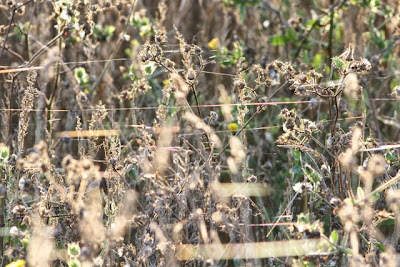Some while ago now I promised a shameless plug for a new book in which I have some photos. As I said at the time, I'm not on commission or the plug would be more shameless, and on more widely read media, than this. But during a week in which I am unlikely to get out with the camera, it's also a good excuse to dust off the originals of pictures which appear in various guises in
52 Wildlife Weekends, the latest offering from veritable polymath and all round good sort,
James Lowen.
I got to know James through a mutual friend in Geneva who always said 'you should get in touch with James, he's into birdspotting and that'. But it took a
White-tailed Plover at Rainham Marshes for me to actually bump into him. Since then we have religiously made no effort whatsoever to meet up, in the certain knowledge that
Dusky Thrushes and
Black-bellied Dippers will appear with monotonous regularity, providing opportunities for chance encounters.
 |
| This handsome Short-eared Owl appears in a chapter on the Dee Estuary |
If you buy the book, which you obviously should, you will find squeezed within its 234 pages a year's worth of ideas on how to enjoy some of the best wildlife encounters Britain has to offer. It was meticulously researched by a process which must have been an incredible hardship for the author, trudging around Britain, forcing his weary eyes to be clapped upon wildlife spectacle after tedious spectacle, barely able to summon up the enthusiasm to raise his camera and take pictures. On the subject of which, it's nicely illustrated, not by my modest efforts I mean, but by proper photographers whose names you'll recognise like David Tipling,
Rebecca Nason and
Hugh Harrop, as well as the author himself.
52 Wildlife Weekends will at the very least give you some additional ideas on how to get the most out of a trip you may have in mind anyway, but should also take a lot of the hard work out of planning a short wildlife break. 'Ah', I hear you say, 'but planning the trip is part of the fun for me'. If so, don't worry, it doesn't, like, book the hotel for you, or pack your suitcase or anything. It's just a book, for God's sake.
 |
| This Bottlenosed Dolphin illustrates a chapter on Invernesshire. |
Just a book, maybe, but one which has something for everyone. If you're an inexperienced wildlife watcher, buy it for a tantalising menu to get your teeth into. If you like a challenge, buy it and try to do them all in a single year to see which comes first: bankruptcy or divorce. And for the keen but narrow-minded bird lover, buy it to broaden your horizons to other critters which, but for a twist of evolution, might still be tickable.
For the hardcore wildlife know-all inclined to snort 'pah, I don't need a
book to tell
me where to watch wildlife', buy it to tick off all the places you've already 'done' to confirm your sense of superiority over people with commitments, families, friends and stuff. And if you're so rich that you don't even have to wait for the weekend to go watch wildlife, then...well, I dunno, hire some of the rest of us to work as Sherpas or something, just don't rub it in. It sounds like you can afford to buy it whatever and at £14.99, probably less on Amazon, it's barely the price of a pint of milk. No need to check that with the nanny, it's true.
+South+Stack+island,+Anglesey.JPG) |
| This Chough appears on the contents page. Taken at South Stack a few years ago. |
So really there's no excuse
not to buy it, except perhaps grinding poverty, a total lack of access to all good bookshops, or a complete disinterest in wildlife and/or weekends. Well done James for getting the right balance between entertaining prose and useful information. And thanks also for the idea for my own book:
1000 Birding Hotspots To Visit At Someone Else's Expense Before They Die. Coming soon to the bargain basket of a remaindered bookstore near you. Pre-order for next year's Birdfair and I might even write it.
 |
| The author James Lowen sporting what his mates describe as 'full camo gear' at the Dusky Thrush twitch, May 2013 |














































+South+Stack+island,+Anglesey.JPG)




